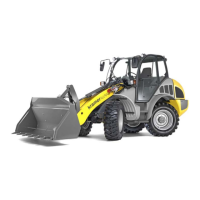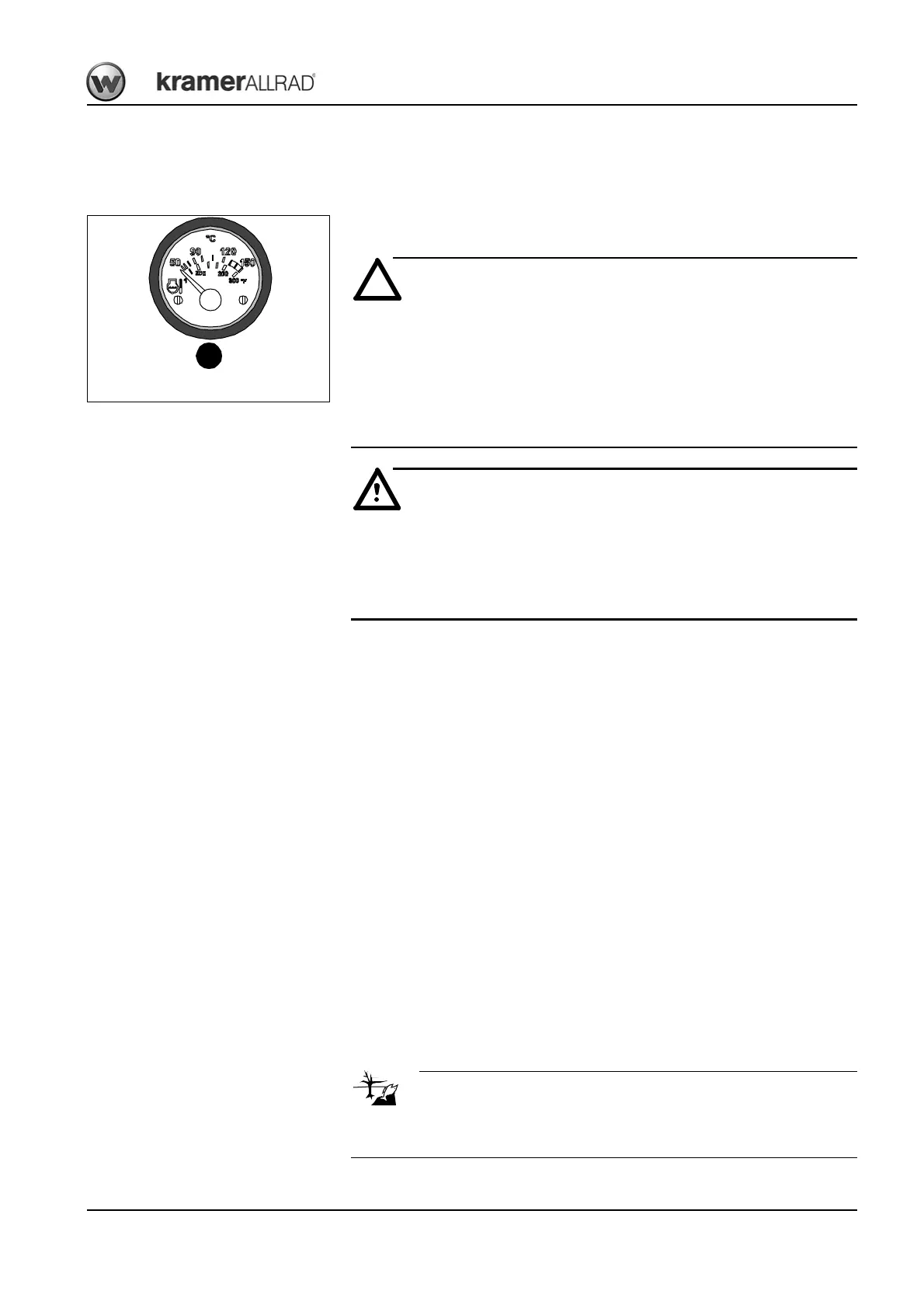BA 35101/02/ 03 EN – Edition 1.0 * 35101_02_03b510.fm 5-7
Maintenance
5.4 Engine and hydraulics cooling system
General instructions regarding cooling system maintenance
The combined oil/water radiator cools the diesel engine and the hydraulic oil of the drive
and work hydraulics.
Engine temperature should be between 80 and 105 °C.
Max. admissible engine temperature is 110 °C.
☞ An alarm sounds if the engine temperature is 115 °C or higher
☞ To cool down: let the engine run at idling speed briefly, then switch it off
• The alarm no longer sounds if the engine temperature is 110 °C or lower
☞ Check the cooling system
Danger of swallowing antifreeze when handling it!
☞ Seek medical attention immediately if antifreeze has been swallowed
☞ Wear protective clothing and gloves
☞ Keep antifreeze out of reach of children
General checks and cleaning work
Dirt on the radiator fins reduces the radiator's heat dissipation capacity!
• Check the radiator once a day for dirt and clean it if necessary. Refer to the mainte-
nance plan for the intervals
• In dusty or dirty work conditions, clean more frequently than indicated in the mainte-
nance plan
• An insufficient coolant level reduces the heat dissipation capacity and can lead to
engine damage!
• Check the coolant level at regular intervals. Refer to the maintenance plan for the
intervals – see chapter 5 “Maintenance plan” on page 5-47
• If the coolant must be replace frequently, have the cooling system checked for leaks by
an authorised workshop!
• Never fill in cold water/coolant if the engine is warm!
• After filling the expansion tank, make a test run with the engine and check the coolant
level again after stopping the engine
• Add enough antifreeze to the coolant.
• Use brand-name antifreeze compounds with anticorrosion additives – see chapter 6
“Coolant compound table” on page 6-13
• Do not use radiator cleaning compounds if an antifreeze compound has been added to
the coolant – otherwise this causes sludge to form that can damage the engine
Use a suitable container to collect the coolant as it drains and dispose of it in
an environmentally friendly manner!
41
Fig. 161: Cooling system temperature gauge

